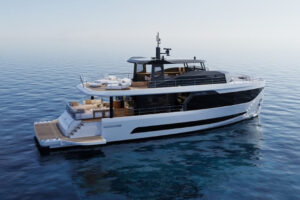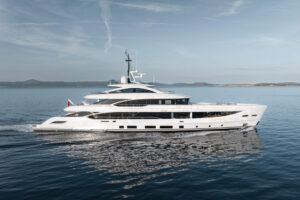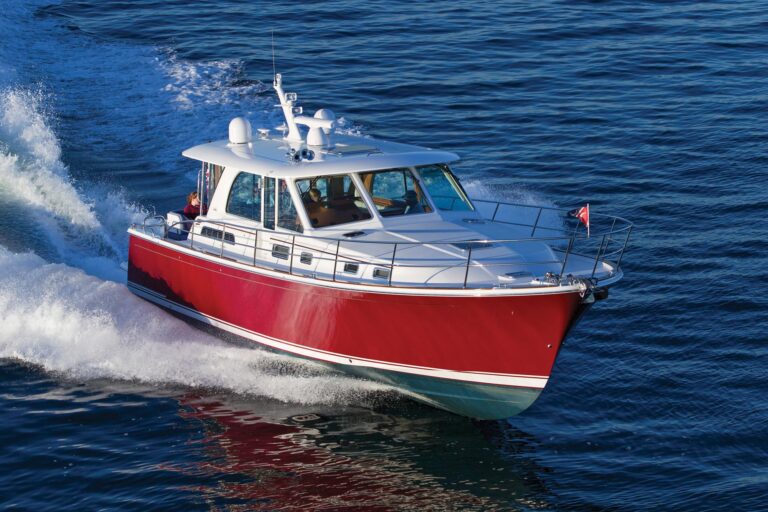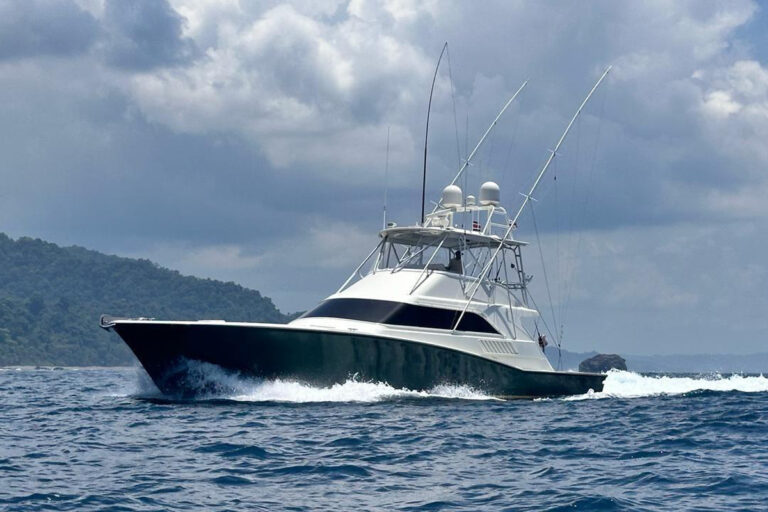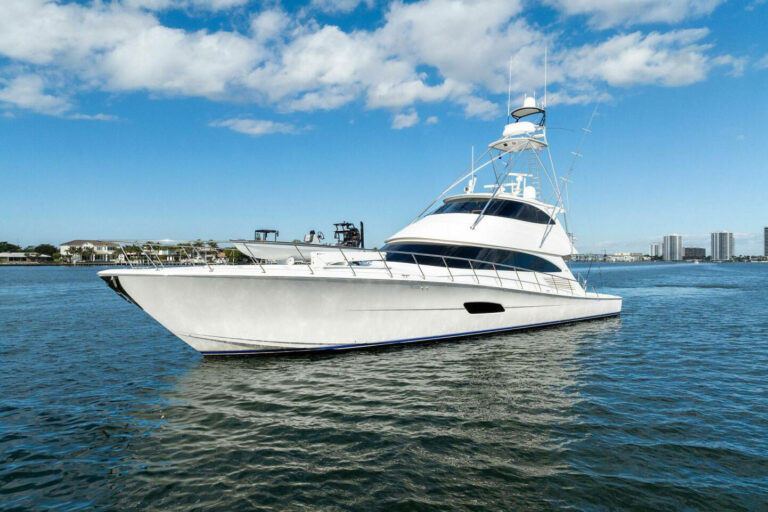The notoriously short chop and steep waves of the Tasman Sea between Australia and New Zealand can be brutal. Monohulls pitch, roll and heave, making the passage unpleasant for almost everyone aboard. Traditional approaches to yacht design may have reached their limit in these seas, which demand a special type of boat that can travel at high speed without excessive motion.
The answer is wave piercers. First built about 20 years ago as ferries to traverse the nasty waters down under and elsewhere, wave-piercing yachts are beginning to appear worldwide as attractive, deceptively conventional motor-yachts such as Sampitres, an 83-footer designed by New Zealander Craig Loomes. She’s fast, easy on fuel, handsome in a business-like way and marvelously roomy inside-certainly more so than any monohull her length. The closed mind of tradition-bound yachtsmen may be all that keeps such motoryachts from being the first choice among avid cruisers.
Sampitres is the latest of Loomes’ wave piercers and, like her predecessors, is an attractive yacht. In profile or from one of her forward quarters, she resembles most motor- yachts her length, but she’s perched atop a pair of wave-piercing catamaran hulls, or demi-hulls in the lexicon of the naval architects. These hulls travel through waves rather than over them, as do monohulls and traditional catamarans the same size, so the yacht pitches, rolls and heaves less in a given sea state.
Reserve buoyancy is the principle behind a wave piercer’s unique motion, and how the designer distributes it vertically determines how a boat reacts to a seaway. Unlike a sportfisherman, which relies on a raked stem and dramatically flared bow for the reserve buoyancy that keeps her from burying in the seas, Sampitres doesn’t have much reserve buoyancy immediately above the waterline. This is what allows the demi-hulls to go through the waves.
Loomes gets reserve buoyancy via a short V-hull under the forward end of the main deck. Serving much the same purpose as flare on a monohull, the reserve buoyancy of this centerline hull lifts the bow in head seas and when the yacht overtakes following seas. Its V-shape also lessens the effect of any large waves that strike the deck’s underside. More important to the conservative yachting community in North America, this V-hull center section establishes the wave piercer as a yacht, not a technological freak, as were, and are, many of the wave-piercing ferries that initially attracted the attention of a handful of designers.
Roger Hatfield of Gold Coast Yachts in St. Croix is a pioneer of wave-piercing ferries, though his completely practical approach doesn’t appeal to yachtsmen. The wave-piercing concept as he sees it for workboats places the main deck well above the water, out of reach of the normal sea state in the Sir Francis Drake Channel, home waters for many of his boats. His demi-hulls extend relatively far forward of the main deck, like the tines of a pickle fork, and the under-wing shape of the main deck is nearly flat. I’ve seen these ferries operating in their home waters, and while our trawler pitched and rolled, the wave-piercing ferry glided along as though she were on a mill pond. Hatfield’s ferries get reserve buoyancy from flare in the structure between the demi-hulls and the main deck. Although the flare works well in moderate seas, it may not be enough to keep bigger seas from battering the main deck’s underside.
By contrast, the structure above Sampitres’ demi-hulls shows a fine but aggressive spoon bow. The demi-hulls are shorter than those of Hatfield’s ferries, and they rise steeply to meet the main deck’s chine line. That chine continues aft to the transom, as you would expect to see on a conventional monohull. It also suppresses spray, as do the rails at the top of the demi-hulls. The severely raked superstructure fascia reinforces the theme of high-tech high speed. Sharply raked lines defining the after extremities, though less severe than the bow’s, prove Sampitres is a serious boat. In profile, the lines formed by the forward and after rakes meet somewhere in the sky.
Sampitres and other designs of her ilk are beamier than monohulls the same length, making them very stable at rest. In rolly anchorages, these yachts are likely to rise and fall like ducks instead of trying to submerse their beam ends. Cornering at speed, Sampitres will remain flat, reassuring passengers that all is well.
Like all catamarans, wave piercers have more wetted surface area than monohulls. You won’t realize a dramatic increase in range if you travel at low speeds most of the time because skin friction causes most of the resistance. Still, as easily driven as these narrow displacement demi-hulls are, they don’t excel until the boat gets into wave-making speeds. At her cruising speed of 20 to 22 knots, Sampitres is said to have a range of about 3,400 nautical miles on her 5,800 gallons of diesel, more than enough to transit the Atlantic. Her top speed is 25 knots.
In the quest for more and more space and luxury aboard modern yachts, Sampitres and other wave piercers from Loomes’ firm bring monohull motoryachts to their knees. All of the machinery is in the demi-hulls, down low where it contributes to stability and where the builder can isolate the ruckus from the living areas. A professional crew also can be well removed from the owner and guest quarters by designing crew’s quarters into the demi-hulls.
If the wave piercer has a serious drawback for world-cruising yachtsmen, it is the need to keep overall weight in check. The limited reserve buoyancy of the demi-hulls won’t support as much weight as a burdensome monohull. Owners will have to resist the temptation to put an entire household aboard. On the other hand, sophisticated laminates reduce the weight of the structure enough to permit all the luxury a discerning yachtsman could want, but he’ll pay more for this luxury than he would on a monohull of comparable length.
Better-looking than the best of the traditional power cats, Sampitres and her sisters may be on the verge of captivating a whole new generation of yachtsmen-ones who’ve grown up in an age of high-tech innovation.
-Additional reporting by Dudley Dawson
Contact: Craig Loomes Design Group, (011) 64 9 360 9799; fax (011) 64 9 360 9795; designer@cld.co.nz; www.cld.co.nz.


